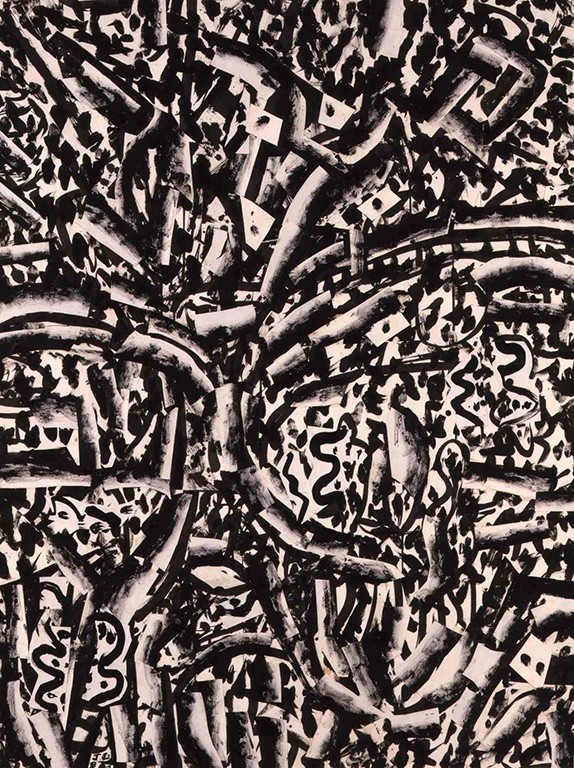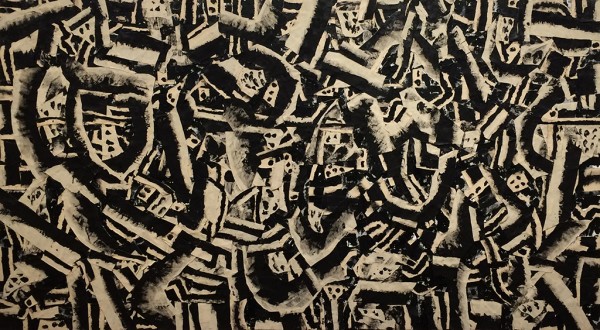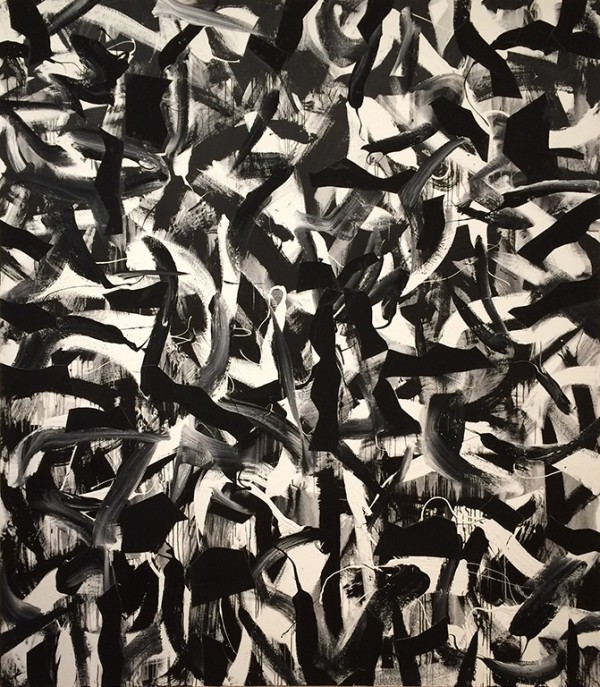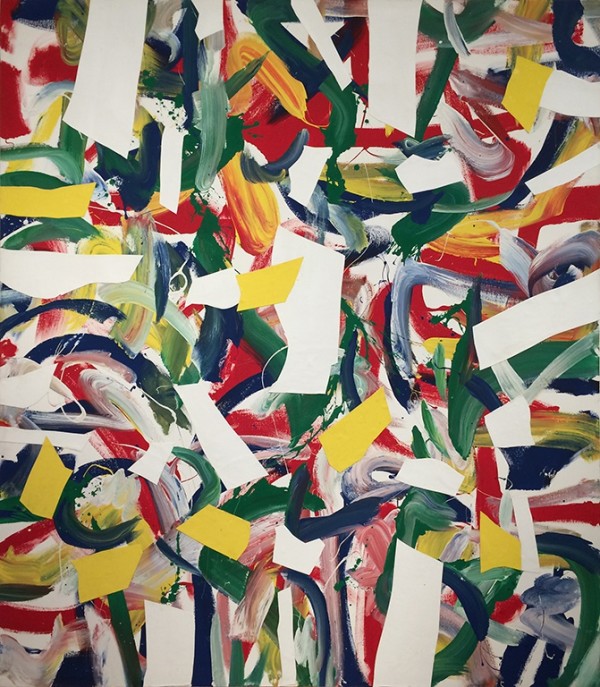Biography
Waddington Custot Galleries is pleased to present a group of paintings by American artist Joseph Glasco (1925–1996) to celebrate the launch of Michael Raeburn’s new book, Joseph Glasco: The Fifteenth American, the first monograph on Glasco’s life and work. A selection of large-scale, collage paintings from the 1980s will be exhibited alongside two early works from the Collection of the late Stanley J. Seeger, Glasco’s most important and enduring patron.
One of the most original American artists of his time, Glasco found success early. At the age of twenty-five, he had his first one-man show at New York’s prestigious Perls Galleries and became the youngest artist to be represented in the permanent collection of the Museum of Modern Art. In 1952, Glasco was the final artist selected for the major MoMA exhibition ‘Fifteen Americans’, alongside Pollock, Rothko, Still and Baziotes among others: “Each is an artist of marked individuality and achievement [… giving] a clue to the thinking of the American artist in our period”. And yet, Glasco has all but disappeared from the history of contemporary art. Raeburn retraces the course of a fascinating artistic life through the highs and lows of the New York art scene from the 1950s to the ’80s. From previously unpublished material, he examines Glasco’s work, his creativity and ingenuity and explores the reasons for his subsequent neglect.
In 1949, Glasco arrived in New York City and was introduced to a circle of artists which included Jackson Pollock and Clyfford Still. However, Glasco’s paintings stood apart from the prevailing Abstract Expressionism, remaining distinctly figurative, densely worked and stylised, and it was Jean Dubuffet, not Pollock, who would provide a catalyst for change in Glasco’s work towards the more textural and abstract. Abstract Expressionism was being promoted as the ‘all-American’ art which personified the ‘free world’, and in this context many critics found Glasco hard to categorise, and he became uneasy with the accompanying pressures of the increasingly market-dominated and political New York art world, determined by the opinions of a certain powerful group of critics, dealers, collectors and institutions. His work continued to be exhibited in New York galleries, but Glasco retreated to Taos, New Mexico, and, after some years in Europe, by the early 1970s he had settled in Galveston, Texas.
It was in 1975 that the young artist Julian Schnabel, visiting a friend’s studio in Galveston, met Glasco for the first time: “from Joe’s studio you couldn’t see outside because the floor-to-ceiling red velvet curtains were only partially open […] Joe was in his kitchen, sitting in the dark in a Metropolitan Opera Egyptian-style black velvet chair. He was listening to Maria Callas […] isolated in the dark, far away from everybody. […] Joe’s need to be an artist had led him away from everything familiar: his friends, his family, his home, society.” Glasco and Schnabel became close friends, forming a mutually supportive relationship, and in
1978 Glasco was persuaded to return to New York, where he had been most productive in the past. There, in a loft-studio in SoHo, he began work on his canvas collages, which would become his defining medium, confirming the importance of colour and scale in his work. Schnabel noted, “He had made some paintings with cut strips of canvas. They were breathing, configuring. Between us there was an unspoken connection about the way to make a painting”.
Glasco had first used collage in the early 1960s, under the influence of Alfonso Ossorio. By the late ’70s, he was producing canvases in two stages, first covering the surface with a gestural layer of paint and then applying and glueing down collage pieces, cut from painted canvas. For Glasco, collage was sculptural, the layers creating shadows, and the technique began to take precedence over his use of paint. His return to New York provided a new impetus to produce work, but also renewed his involvement in the art world, from which he had previously shied away, although he left the city again in 1983. Through Schnabel and Seeger, Glasco came into contact with Leslie Waddington, and he returned to New York once again to work on pictures in Schnabel’s studio in preparation for his 1989 exhibition at Waddington Galleries in London.
Glasco’s aversion to the art market and his move to the relative isolation of Galveston had created a distance from the contemporary scene. However, the critic Hilton Kramer, who remained a consistent supporter of his work, wrote, “it is as if the artist had abandoned his figures to the world of shadows in order to harness his art to a new world of color and light […] If this is what an absence from the New York scene can do for a mature and thoughtful artist, it might be something worth thinking about as a regular program.” The present monograph and exhibition brings Glasco’s work to a new audience and provides a reappraisal of his work with hindsight and an understanding of the wider context.
Biography
Joseph Milton Glasco (b. 1925, Paul's Valley, Oklahoma; d. 1996, Galveston, Texas) enrolled at University of Texas at Austin (1942) before joining the US Army Air Force during World War II. In 1945, he studied at Portsmouth Art School in England before returning to the US, attending Art Center School and Jepson Art Institute, Los Angeles (1946); School of Painting and Sculpture, San Miguel de Allende, Mexico (1948); Art Students League, New York (1949). In New York, his first one-man show was held at Perls Galleries (1950) followed by regular exhibitions at Catherine Viviano Gallery and later Gimpel + Weitzenhoffer Gallery. In 1986, a major retrospective was held at Contemporary Art Museum, Houston. His work is in the collections of The Metropolitan Museum of Art, The Museum of Modern Art, and Whitney Museum of American Art, New York; Hirshhorn Museum and Sculpture Garden, Washington, D.C. and Museum of Fine Arts, Houston.
Author
Michael Raeburn, born in London in 1940, has worked as a publisher, editor, book designer, and writer. He is the author of books on architecture, art, ceramics and opera and has collaborated with his wife, Marilyn McCully, on a number of art exhibitions, principally on Picasso. This monograph is dedicated to the late Stanley J. Seeger who encouraged him to embark on a book on Joseph Glasco. His research, begun in 2006, has taken him through Texas, from Galveston to Amarillo, and to Taos, New Mexico, as well as to many cities with collections of Glasco’s work, including New York, New Haven, Cleveland, Atlanta, and Washington, D.C.
Book details
Publisher: Cacklegoose Press in association with University Press of New England in 2015
Hardcover: 400 pp. 315 colour illustrations. 8 x 10 inches
ISBN-10: 161168854X / ISBN-13: 978-1-61168-854-2
Available from: Oxbow Books at www.oxbowbooks.com/oxbow/joseph-glasco.html
Price: £49.00
Read more
-

Joseph Glasco, View of Toledo One, 1982
acrylic on paper collage
50 x 38 in / 127 x 96.5 cm
© 2015 Joseph M. Glasco Estate
Stock number B20261
-

Joseph Glasco, Untitled, 1983–84
acrylic on canvas collage
54 x 97 1/4 in / 137 x 247 cm
© 2015 Joseph M. Glasco Estate
Stock number B20412
-

Joseph Glasco, Untitled No.13, 1989
acrylic and collage on canvas
96 x 84 in / 243.8 x 213.4 cm
© 2015 Joseph M. Glasco Estate
Stock number B21147
-

Joseph Glasco, Untitled No.9, 1989
acrylic and collage on canvas,
96 x 84 in / 243.8 x 213.4 cm
© 2015 Joseph M. Glasco Estate
Stock number B21143











